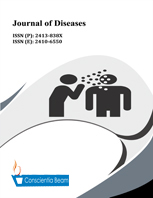Development of Periodontitis after Antihelicobacter Therapy in Patients with Ulcer Disease
DOI:
https://doi.org/10.18488/journal.99/2017.4.1/99.1.1.7Abstract
Helicobacter pylori infection is associated with the most common diseases of the stomach and duodenum such as peptic ulcer, gastric cancer, and chronic gastritis. Stomach and duodenum are well-conditioned organs for bacteria. Oral cavity is considered a secondary reservoir of H. pylori. The infection responds well to complex antibacterial treatment, but the risk of recurrence and side effects of this treatment is sufficiently high. This article discusses the H.pylori-related pathology of oral cavity and paradentium, and the side effects and tolerability of eradication therapy. The pathways for optimization of the treatment for H. pylori infection with the use of drugs contributing to the restoration of microflora of the gastrointestinal tract and oral cavity are offered.

